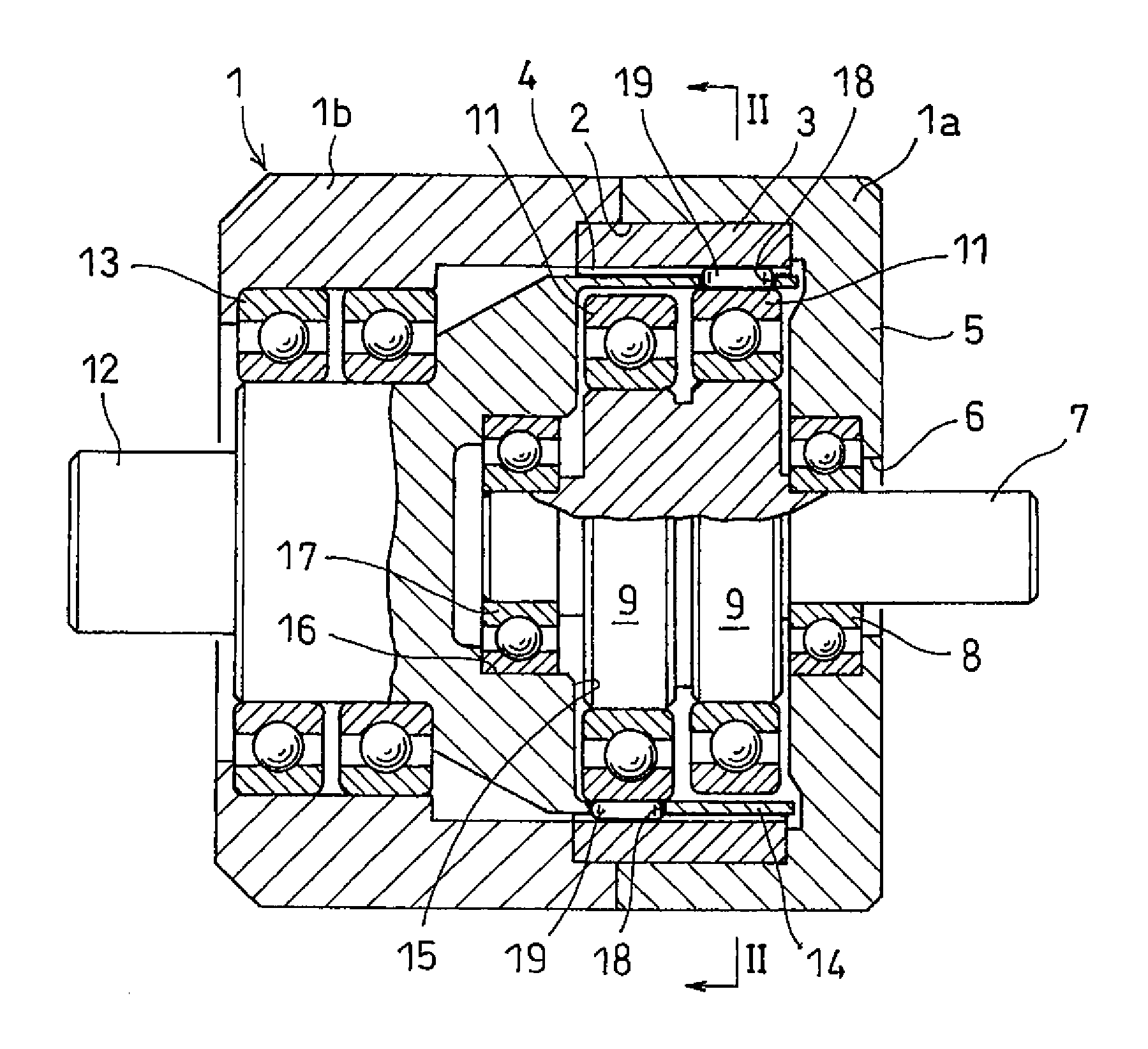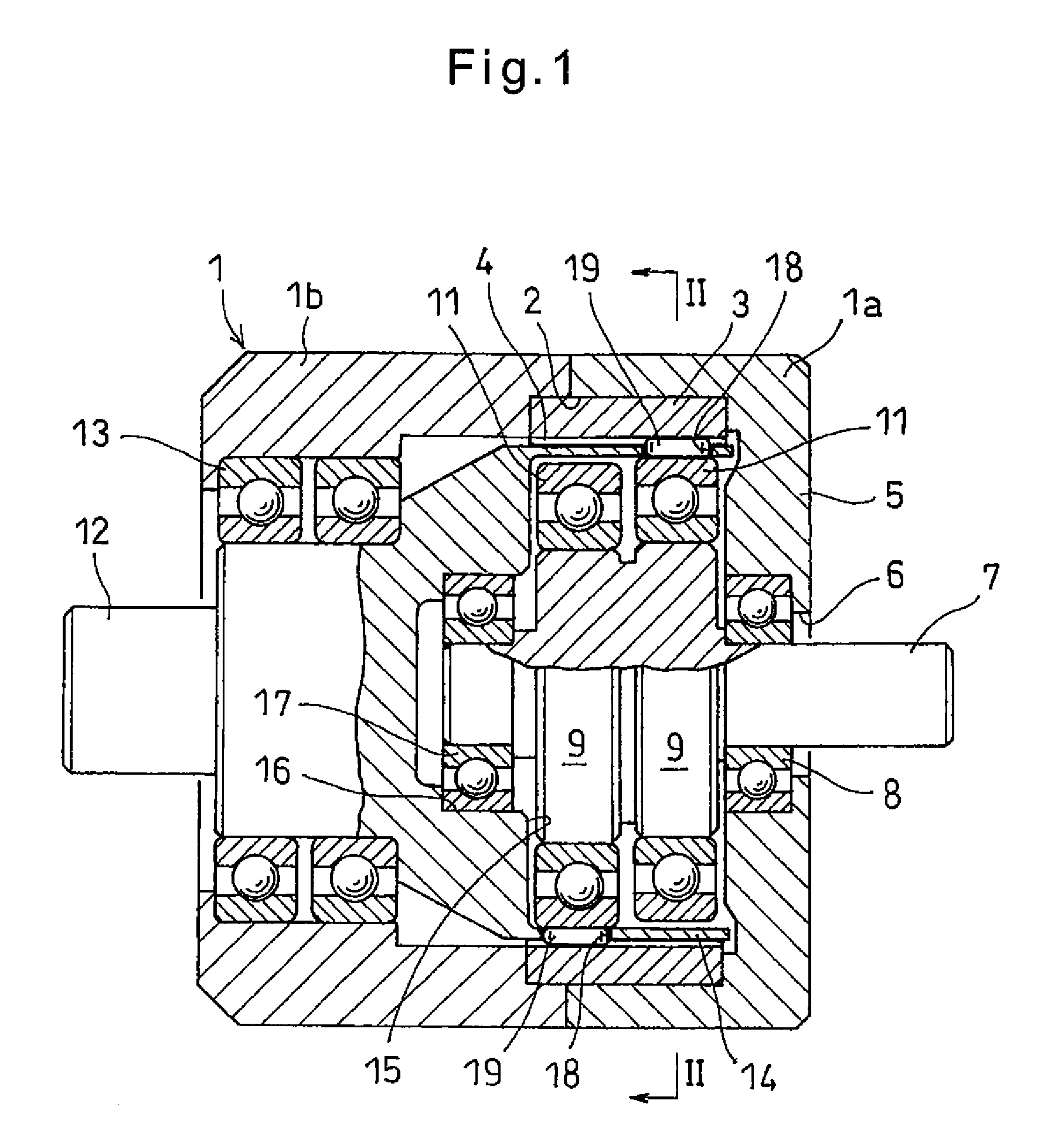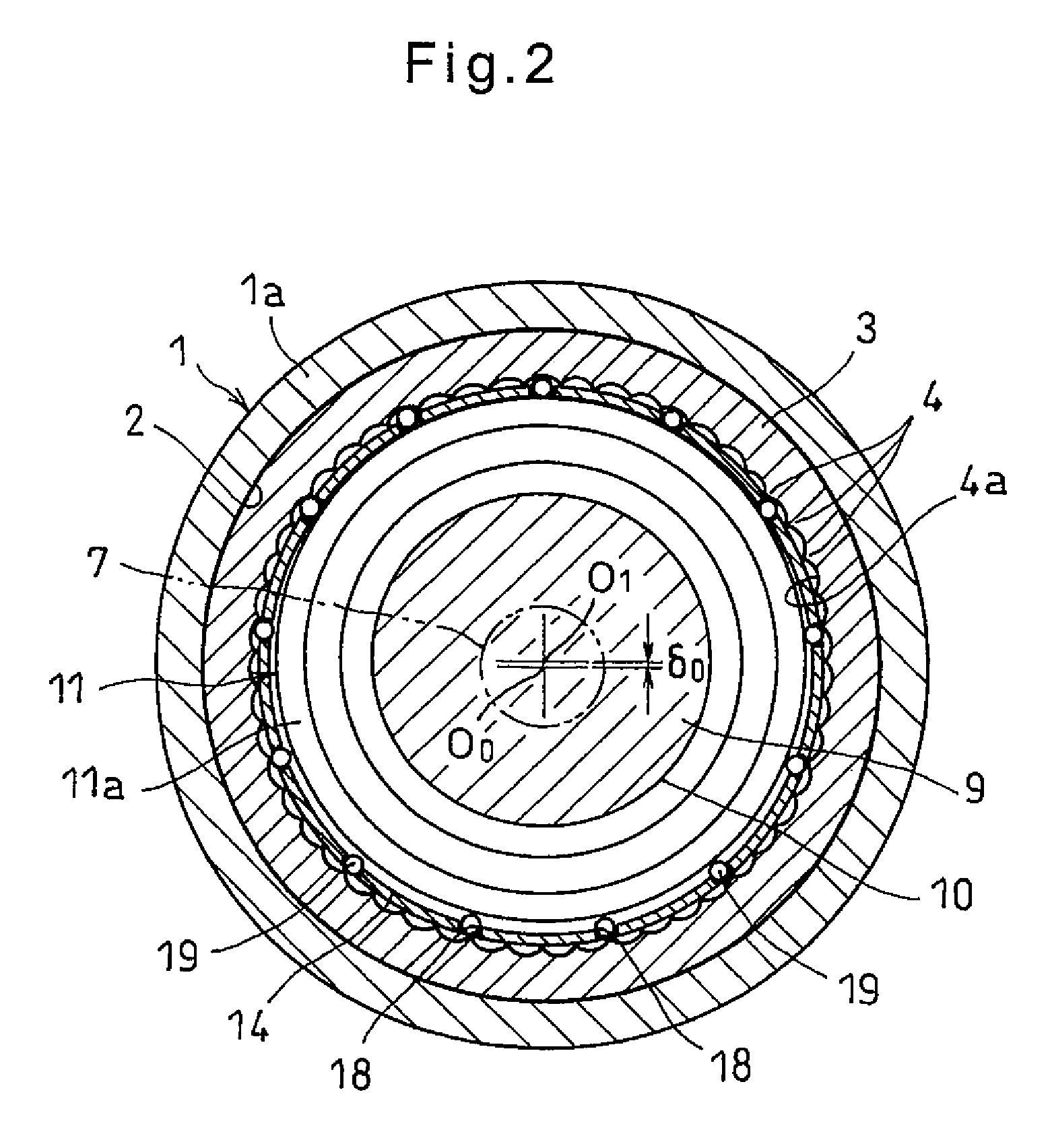Speed reducer
a technology of speed reducer and reducer, which is applied in the direction of friction gearing, toothed gearing, bearing and roller, etc., can solve the problems of reducing the gap 20/b> of the roller, and the inability to rotate at a constant speed, so as to reduce the vibration stabilize the quality of the speed reducer
- Summary
- Abstract
- Description
- Claims
- Application Information
AI Technical Summary
Benefits of technology
Problems solved by technology
Method used
Image
Examples
Embodiment Construction
[0026]Referring now to the drawings, the speed reducer embodying the present invention includes a cylindrical housing 1 (FIG. 1). The housing 1 is axially split into first and second split housing portions 1a and 1b.
[0027]The first and second split housing portions 1a and 1b are joined together by tightening bolts (not shown). A large-diameter recess 2 is formed in the radially inner surfaces of the first and second split housing portions 1a and 1b near the abutment ends thereof to extend across the abutment ends.
[0028]As shown in FIGS. 1 and 2, an internal gear 3 having a plurality of teeth 4 on the inner periphery thereof is press-fitted in the large-diameter recess 2.
[0029]As shown in FIG. 1, the first split housing portion 1a has an end wall 5 closing one end of the housing portion 1a. An input shaft 7 extends through a shaft inserting hole 6 formed in the center of the end wall 5. The input shaft 7 is rotatably supported by a bearing 8 mounted in the shaft inserting hole 6 so ...
PUM
 Login to View More
Login to View More Abstract
Description
Claims
Application Information
 Login to View More
Login to View More - R&D
- Intellectual Property
- Life Sciences
- Materials
- Tech Scout
- Unparalleled Data Quality
- Higher Quality Content
- 60% Fewer Hallucinations
Browse by: Latest US Patents, China's latest patents, Technical Efficacy Thesaurus, Application Domain, Technology Topic, Popular Technical Reports.
© 2025 PatSnap. All rights reserved.Legal|Privacy policy|Modern Slavery Act Transparency Statement|Sitemap|About US| Contact US: help@patsnap.com



